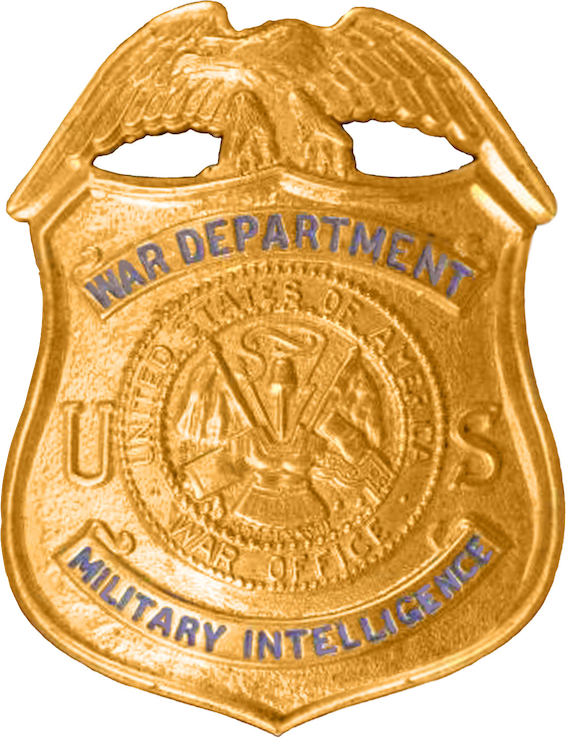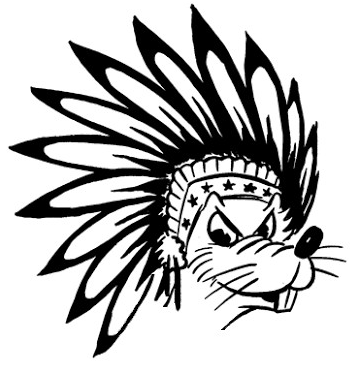 対敵諜報部隊
対敵諜報部隊 
 対敵諜報部隊
対敵諜報部隊 
Counter Intelligence Corps, The United States Army

解説:池田光穂
"The United States Army Counter Intelligence Corps (Army CIC) was a World War II and early Cold War intelligence agency within the United States Army consisting of highly trained Special Agents. Its role was taken over by the U.S. Army Intelligence Corps in 1961 and, in 1967, by the U.S. Army Intelligence Agency. Its functions are now performed by its modern-day descendant organization; United States Army Counterintelligence. The National Counter Intelligence Corps Association (NCICA), a veterans' association, was established in the years immediately following World War II by Military Intelligence agents who had served in every area of military and domestic operations. The organization meets annually. Its newsletter, the Golden Sphinx, is published quarterly." - Counter Intelligence Corps (Army CIC).
"The looming threat of
war in the late 1930s brought an expansion of the CIP back to its World
War I levels, and the entry of the United States into World War II in
December 1941 brought an even greater expansion, and a new name. On 13
December 1941 the Adjutant General of the Army issued an order renaming
the CIP as the Counter Intelligence Corps, effective from 1 January
1942.[1] A new complement of 543 officers and 4,431 non-commissioned
agents was authorized. The CIC recruited men with legal, police or
other investigative backgrounds, and particularly looked for men with
foreign language skills. Special CIC teams were created during World
War II in Europe, in large part from the Military Intelligence Service
personnel (see Ritchie Boys). However, there were never enough of these
and local interpreters were often recruited.[2]
As most CIC agents in the field (as well as Military Intelligence
Service in Europe) held only non-commissioned officer rank— corporals
and various grades of sergeant— they wore either plain clothes, or
uniforms without badges of rank; in place of rank insignia, and so as
not to be perceived as privates, agents typically wore officer "U.S."
collar insignia. They were instructed to identify themselves only as
"Agent" or "Special Agent" as appropriate, in order to facilitate their
work. These practices continue among modern counterintelligence
agents.[3]
Within the U.S. the CIC, in collaboration with the Provost Marshal
General and the Federal Bureau of Investigation (FBI), carried out
background checks on military personnel having access to classified
material, investigations of possible sabotage and subversion, and
allegations of disloyalty, especially those directed against Americans
of Japanese, Italian or German ancestry. Despite the prohibitions in
the delimitation agreement with the FBI, the CIC ended up devoting
considerable effort to civilian investigations. As Volume 7 of The
History of the Counter Intelligence Corps explains: "Espionage and
sabotage, being enemy directed, involved more than one person. Usually
there were a number in the chain extending from the agent in the United
States back through cutouts and couriers to the enemy country. This
inevitably involved civilians with military suspects and the case
became connected with the FBI. The military aspect became minor, and
major investigative effort was in the civilian community to locate the
higher-ups who presumably were controlling more than one agent."[4]
However the use of informants within the Army became politically
controversial, and CIC was forced to curtail its activities. In
particular, the CIC was ordered to cease its domestic investigations,
to destroy its investigative records, and to ship its agents out to
overseas theaters.[5] The reason for this sudden and unprecedented
expulsion has never been clarified. One leading theory was expressed in
the official history of the Corps, "the speed [of these events] left
little doubt that someone—possibly Communists who still held key
positions in government—was determined to halt CIC investigative
activities in the United States".[6] Another possible explanation is
that the CIC mistakenly bugged the hotel room of Eleanor Roosevelt and
incurred the President’s wrath. In any event, the CIC protected the
investigative records it had so painstakingly accumulated. According to
Sayer and Botting (p. 47) "When the command was given to cease any
investigations of known or suspected Communists and destroy all files
on such persons immediately, eight of the nine Corps Area Commanders
took the remarkable step of disobeying this order". According to the
official history of the Corps, this information proved highly valuable
in controlling communism: "the information acquired by CIC from May
1941 to September 1945 regarding communism and its adherents played a
major part in keeping communism under control in the United States ever
since".[7]
" https://en.wikipedia.org/wiki/Counterintelligence_Corps#World_War_II
リンク
文献
その他の情報
Copyleft, CC, Mitzub'ixi Quq Chi'j, 1996-2099

A gopher wearing an Indian headdress was designed as the MIS Language School
mascot in 1943 by MIS student Chris Ishii, a Disney Studios animator
before the war. The language school was located at the time at Camp
Savage, in former Lakota territory in Minnesota, commonly known as “the
Gopher State.” The Savage gopher was not official, but Nisei veterans
of the MIS used it as their emblem for years, until complaints from
Native Americans led to its replacement 50 years later.